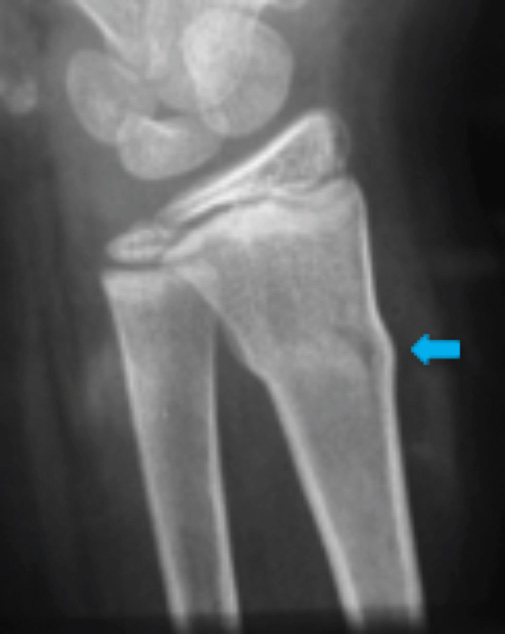What is a Buckle Fracture?
Buckle fractures occur when a bone is compressed, like pushing in the side of a plastic water bottle. The bone “buckles” on one side, but does not break all the way through, leaving the other side of the bone unaffected. This occurs commonly in children because their bone is more like plastic and less brittle than adult bone.
What causes a Buckle Fracture?
Buckle fractures typically occur in children under 10 years old, because the bone is still growing and relatively flexible.
Although buckle fractures can occur in different areas (arms or legs), they most commonly occur in the forearm, near the wrist, due to blunt trauma or a hard fall on an outstretched hand.
Signs and Symptoms:
A buckle fracture will typically manifest with immediate pain over the affected area. Other symptoms may include:
- Swelling and bruising along the area
- Tenderness to touching the area
- A visible deformity of the area
Diagnosis:
A Campbell Clinic orthopedic physician will diagnose a buckle fracture after physical exam and X-ray imaging.
The doctor will ask about the injury and associated symptoms. During the physical exam, the doctor will test for signs of vascular and nerve damage which is very rare and may also apply gentle pressure along the area to determine the exact location of the fracture.
After performing a physical assessment, the physician will order an X-ray of the affected area to confirm diagnosis and locate the exact location of the buckle fracture.
Treatment:
Buckle fractures are stable fractures that can usually be treated with a cast or removable splint for 3-4 weeks to protect and support the injured area while it heals. Your doctor may place you in a splint for an additional 3-4 weeks to wear during sports/play activities.
Outlook (Prognosis):
Most children experience a full recovery from buckle fractures with proper treatment, but temporary stiffness and weakness in the area are typical after removing the cast or splint. They are not associated with long term problems.

